We shall study agricultural multistage centrifugal submersible pump types with the functions/uses in this post. Let’s examine some of a multistage pump’s essential parts and how they function.
multistage centrifugal pump are used to
A rotating machine called a multistage centrifugal pump transforms kinetic energy into liquid head. One way to describe a centrifugal pump is as such. There are many more, but for now, this will do. It is a device used to move liquids from one location to another, to put it simply. All facilities, including refineries, oil rigs, petrochemical factories, power plants, and more, require multistage industrial pumps. Of course, in addition to the water supply business, multistage pumps are also employed in other sectors, including agriculture, the food sector, and house building. The pump impeller receives kinetic energy from an external drive such as an electric motor, diesel generator, or even a turbine. Centrifugal force causes fluid to flow into the impeller and out the impeller tip. Through a spiral, exhaust. The conversion of energy is the pump’s operating principle. The centrifugal multistage pump’s suction port is to the left of the pump and descends into the impeller’s eye. The impeller revolves inside the diffuser and has worn rings. A stamp may be seen on the left. This seal is mechanical. Pump shaft and pump body gaps are closed with the aid of mechanical seals. This will stop any potential leaks. Ball bearings, also referred to as roller bearings, are also available. The same procedure is repeated for each impeller as fluid enters from the suction port, travels through the impeller holes, and exits the impeller. The liquid is driven out once we reach the final impeller and runs up from there, out this drain. This is how a multistage centrifugal pump is often set up, but let’s now go into greater depth about how it operates and what occurs as liquid passes through the pump. The liquid is sucked in at the inlet and then enters the impeller’s eye. The diffuser’s fixed housing has an impeller that also rotates on its own. Each impeller has a diffuser surrounding it. There are 7 diffusers and 7 impellers in this specific pump. The impeller holes receive fluid, which is then radially thrust forth into the diffuser housing. It enters the diffuser, changes course, and then emerges out the diffuser. The diffuser and the impeller both have to increase pressure while decreasing speed. The liquid is driven into the housing’s area as it leaves the diffuser. The following impeller’s eye will then get it. This operation is repeated to fling the liquid in a radial motion. It will pass through the diffuser and the impeller before we once more reduce the speed and raise the pressure. This procedure is repeated seven times, and once the seventh impeller releases the liquid, the pump’s outlet allows the liquid to exit. Every impeller and diffuser falls within the category of a stage. Our pump is a 7-stage pump because it has 7 diffusers and 7 impellers. It is significant to observe that while the pressure is raised at each level, the flow remains unchanged. 
Multistage Centrifugal Pump
One of the industrial pumps that is most frequently used worldwide is the centrifugal pump namely multistage pump. They are utilized in a variety of applications across numerous industries. However, compared to a conventional single-stage centrifugal pump, investing in a multi-stage pump could be more worthwhile depending on the work at hand. What precisely distinguishes the two, then? Centrifugal pumps: single-stage versus multi-stage The number of stages distinguishes single-stage centrifugal pumps from multi-stage centrifugal pumps. As the name implies, multi-stage pumps have at least two impellers, whereas single-stage pumps have just one. A centrifugal pump’s impeller compresses and moves the liquid. Multistage pumps provide a considerably wider range of pressure and flow since they contain several impellers. Each impeller in a multi-stage centrifugal pump functions as a single-stage pump in the chain of pumps. This chain arrangement is what gives multistage centrifugal pumps their benefits. The fluid’s pressure rises as it passes from one impeller to the next, but the flow rate stays constant. Multistage centrifugal pumps can generate more power and higher pressure with a smaller motor, requiring less energy. To distribute the pressure load of the pump, many impellers are used. Applications for Multistage Centrifugal Pumps in Industry Due to their greater efficiency and capacity to pump liquids at higher pressures, multistage centrifugal pumps are frequently used in industrial applications. Water is fed into steam boilers by boiler feed pumps. Fighting fires used to pressurize water to help put out fires High pressure washing creates a strong water flow to clean items. Irrigation utilized to circulate water across an irrigation system. Water contaminants are removed using reverse osmosis. Snowmaking with compressed water for resorts and sports. Increased pressure in the system allows for continuous water circulation. Increased water pressure increased water supply Multistage Centrifugal Pump Types Multistage pumps come in two primary categories. 
multistage centrifugal pump price
Vertical Multistage Horizontal Centrifugal Pump Multistage Vertical Centrifugal Pump Vertical Multistage Horizontal Centrifugal Pump The most prevalent kind of multistage centrifugal pump is the horizontal pump, which has been employed in the aforementioned applications. These kinds of pumps function by applying pressure on liquid as it passes horizontally through several impellers. In general, horizontal pumps can handle larger flow rates than vertical pumps, with the exception being vertical turbo pumps. A horizontal multistage centrifugal pump’s segmented housing is usually a good indicator of its type. However, employing a horizontal pump instead of a vertical pump has a few minor disadvantages. The operation and maintenance of horizontal pumps are labor-intensive. In comparison to their vertical counterparts, horizontal multistage pumps can be fairly expensive, depending on their characteristics and the application they are utilized in. Multistage Vertical Centrifugal Pump Vertical pumps are not as extensively utilized as horizontal pumps because they are more limited in usage. With their impellers piled on top of one another, vertical multistage pumps feature shafts that are vertically orientated. Clean water applications are perfect for vertical multistage pumps since they have substantially lower clearances than horizontal pumps. These pumps can deliver high pressure fluid using just one pump body and motor due to their neat and space-saving design, making them perfect for confined spaces. Vertical pumps do have a significant drawback in that they cannot handle solids or dirt and are more likely to jam. Dead pressure occurs when the valve is closed to stop the pump from discharging. The water in the pump spins constantly as a result, eventually producing steam. Centrifugal pumps are susceptible to permanent damage from dead pressure. 
Centrifugal Pump Functions
The most common and well-liked kind of pump in functions for moving liquids is a centrifugal pump. Simply described, it is a pump that moves water or other fluids using centrifugal force and an impeller that rotates. In many different industries, such as agricultural, municipal (water and wastewater treatment), industry, power plants, oil, mining, chemical, pharmaceutical, etc., it is without a doubt the preferred option of pumps for transporting liquids from one place to another. Because they can frequently handle massive volumes of liquid, deliver extremely high flow rates (which may vary with total dynamic head (TDH) of a specific piping system), and have a wide operating range, centrifugal pumps are advantageous. Typically, centrifugal pumps are made for relatively low viscosity liquids like water or light oil. The centrifugal pump needs more power to run viscous fluids like 10 or 20 weight 68-70 degree F oils. Positive displacement pumps are preferable over centrifugal pumps for viscous liquids that are over 30 wt. oil in order to save energy. You may learn more about these pumps and choose the optimal pump choice for your operation by reading the following information. How centrifugal pumps work Let’s examine the operation of centrifugal pumps in more depth. To create flow or raise liquids from a low level to a high level, centrifugal pumps are utilized. These pumps’ operating principles are relatively straightforward. Centrifugal pumps change the energy in a rotating fluid (often from a motor) into energy. The impeller and the casing are the two major components in charge of converting the energy. The pump’s revolving component is called the impeller, and the casing is the space around it that is airtight. Fluid enters the casing of a centrifugal pump, settles on the vanes in the impeller’s eye, and rotates tangentially and radially outward until it leaves the impeller and enters the diffuser portion of the casing. The fluid picks up speed and pressure as it travels past the impeller. When choosing a centrifugal pump, keep in mind the following important elements that have an impact on the performance of the pump: Working fluid viscosity is the ability to withstand shear force when energy is applied. Due to the large liquid shear forces produced by the pumping operation, centrifugal pumps are typically appropriate for low viscosity liquids. a working fluid’s specific gravity and specific gravity – Its weight per unit volume is what determines a fluid’s density. The ratio of a fluid’s density to that of water is expressed as fluid mass per unit volume and fluid gravity. It directly impacts the amount of electricity needed to pump a particular liquid. When working with liquids other than water, it’s crucial to take specific gravity and weight into account because they have a direct impact on how much work the pump will have to accomplish. 
multistage centrifugal pump diagram
Operating Temperature and Pressure – Temperature and pressure in the pumping system are crucial elements in any operation. In order to pump at high temperatures, for instance, special seals, gaskets, and mounting structures may be needed. Similar to this, high pressure situations could call for a properly made retaining sleeve. Cavitation and Net Positive Suction Head (NPSH): NPSH refers to the fluid pressure on the pump’s suction side, which is used to assess if it is high enough to prevent cavitation. Cavitation, which can seriously harm the impeller and result in lower flow/pressure etc., is the occurrence of air bubbles or voids in the liquid that form in relatively low pressure zones around the impeller. It must be assured that the system’s net positive suction head (NPSHA) was sufficient to provide a safety margin and was higher than the pump’s required net positive suction head (NPSHR). The pressure at which a fluid turns into a vapor at a specific temperature is known as the vapor pressure of the working fluid. To avoid cavitation and bearing damage from idling as the liquid evaporates, this value must be established. Pumps come in a variety of capacities and sizes due to the large range of uses. You should also take into account the volume and pressure requirements for the specific task that the pump must perform. When it comes to volume and displacement, the amount of horsepower needed is another crucial consideration. Uses for centrifugal pumps Centrifugal pumps are a good contender for many applications because they are the most common option for moving liquids, and as was already said, they are employed in many industries. The most frequent uses include water delivery, pressurization, domestic pumping, fire auxiliary systems, hot water circulation, wastewater treatment, and boiler water conditioning. Some of the key sectors that employ these pumps are listed below: Energy from oil: oil pumping, slurries, and slurries; used in refineries and power plants Heating and ventilation, boiler feed water applications, air conditioning, pressurization, and fire sprinkler systems are all examples of industrial and fire protection. Drainage, gas treatment, irrigation, and flood control are all related to waste management, agriculture, and manufacturing. Paints, hydrocarbons, petrochemicals, cellulose, sugar refining, food and beverage production, and pharmaceutical, chemical, and food industries The manufacturing, industrial, chemical, pharmaceutical, food, aerospace, and other industries—for cryogenics and refrigerants. 
multistage centrifugal pump
Centrifugal pump types Based on characteristics including design, construction, application, service, adherence to national or industry standards, etc., centrifugal pumps can be categorized into a wide range of varieties. Consequently, a certain pump can be categorized into many groups, and occasionally the pump can be identified by its description. The following list of these groups is highlighted: Pumps can be categorized into the following groups based on how many impellers they contain: Pump has one impeller, one stage, a straightforward construction, and minimal maintenance. Ideal for installations with low pressure and strong flow. They are primarily employed for pumping services requiring high flow and low to medium TDH (Total Dynamic Head). Two-stage pumps are utilized for medium head applications and have two impellers operating side by side. Three or more impellers are arranged in series on a multistage pump for high service. Describe a pump head. The pressure at which the pump can lift the liquid is commonly referred to as the pump head. This is significant because it evaluates how well the pump will function. The flow and pressure capabilities of a pump are its most crucial specifications. Split case Another criterion for categorizing centrifugal pumps is the direction of the housing split: Pumps with an axial split have a separation line on the centerline of the shaft where the pump body splits from the volute, which is split in this way.  For simplicity in installation and maintenance, axially split pumps are typically positioned horizontally. Radial split: The split in the pump body is radial, while the split in the spiral shell is perpendicular to the shaft’s axis. Classification based on the type of impeller It has a straightforward design, but the impeller has a higher axial thrust because the fluid only enters the vanes from one side of the impeller balance. Single Suction – This kind of pump has a single suction impeller that only permits liquid to enter the vanes from one side. Double Suction: This specific type of pump includes a double suction impeller, which has a lower NPSHR than a single suction impeller and allows fluid to enter from both sides of the vane. The most prevalent kind of double suction impeller pump is the split pump. If the pump has many impellers, whether it is single or double suction will depend on the design of the first stage impeller.
For simplicity in installation and maintenance, axially split pumps are typically positioned horizontally. Radial split: The split in the pump body is radial, while the split in the spiral shell is perpendicular to the shaft’s axis. Classification based on the type of impeller It has a straightforward design, but the impeller has a higher axial thrust because the fluid only enters the vanes from one side of the impeller balance. Single Suction – This kind of pump has a single suction impeller that only permits liquid to enter the vanes from one side. Double Suction: This specific type of pump includes a double suction impeller, which has a lower NPSHR than a single suction impeller and allows fluid to enter from both sides of the vane. The most prevalent kind of double suction impeller pump is the split pump. If the pump has many impellers, whether it is single or double suction will depend on the design of the first stage impeller.
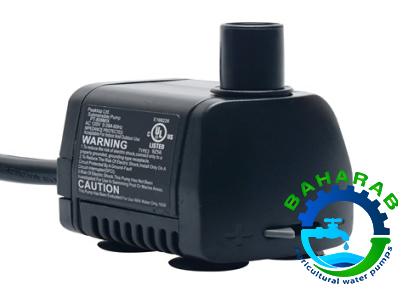

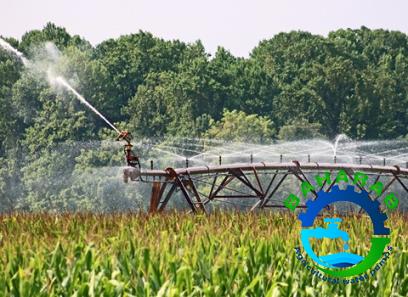

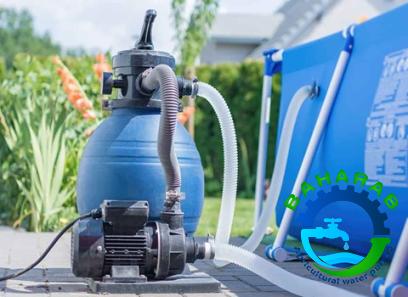
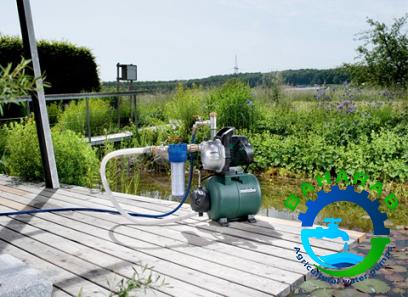
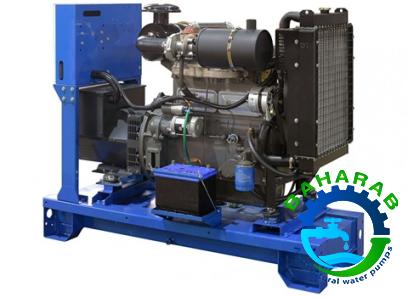

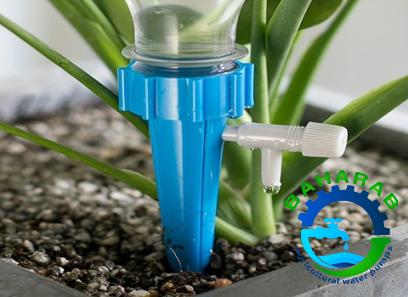
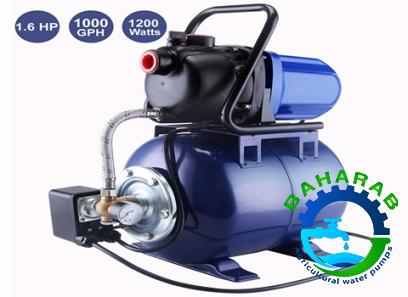
Your comment submitted.